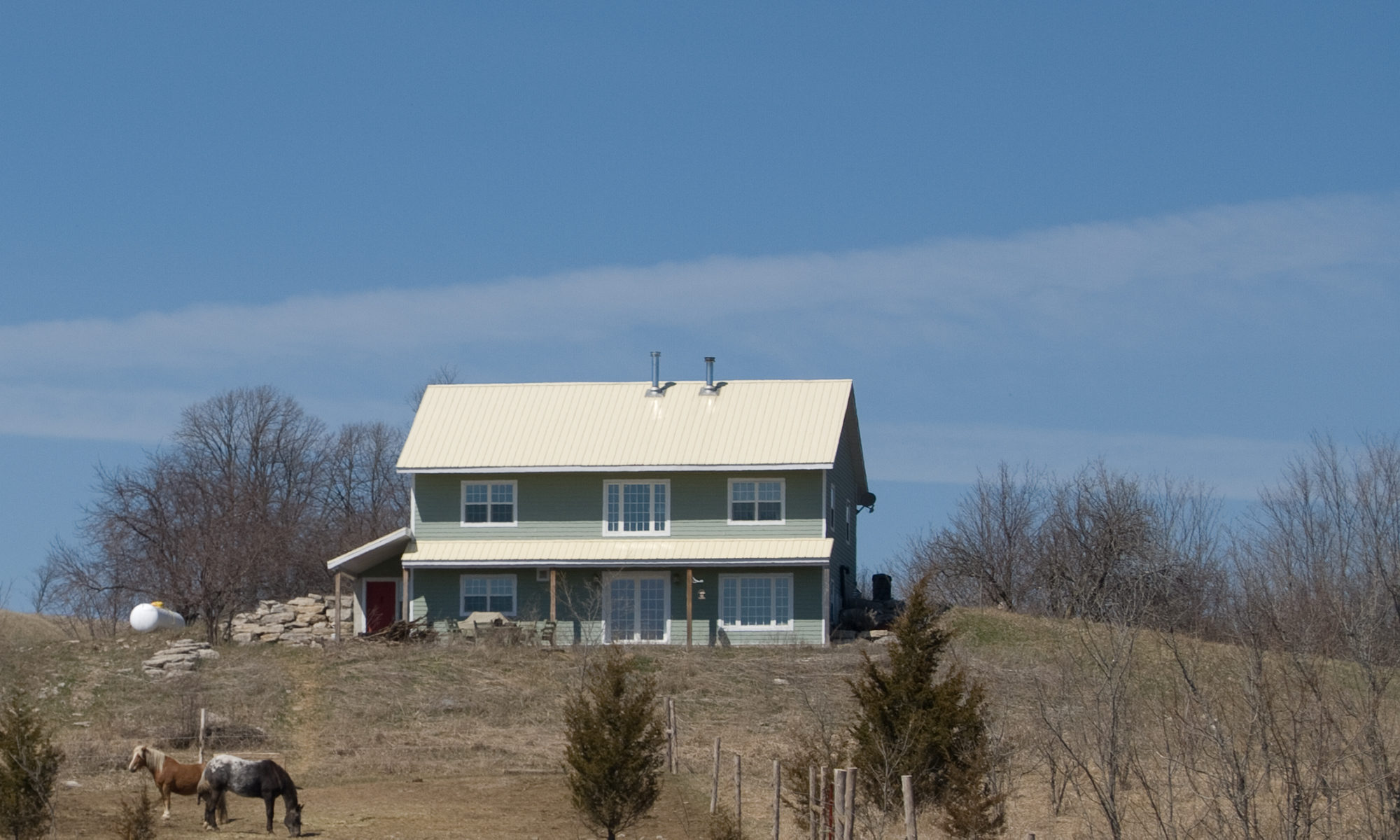On a construction site there is usually a generator running, producing noxious fumes and a lot of noise. There is a greener, quieter alternative. An idea I read about a few years ago was to use a battery bank and an inverter rather than a generator for powering tools on a construction site. In the case I read about the builder had a bank of deep cycle batteries in his truck attached to an inverter, a device that converts the DC power from the battery to AC power that can be used by the power tools. At night he would take the batteries back home and charge them using grid power and then return to the construction site the next day with the full batteries for another day of work.
The nature of the electrical load on a construction site is quite sporadic. A saw is only run when a board needs cutting, a compressor only runs once in a while to recharge. In the meantime, the generator is running all day, since the workers don’t want to be bothered turning it off and on as it is needed, so it is wasting fuel for no useful work for most of the day. Using a battery bank and inverter, there is only a very small amount of standby loss, and the inverter only turns on when power is needed. Since most tools are less than 15amps, a 2000 watt inverter would produce a sufficient amount of power. If more tools are used at once, a larger inverter, or multiple inverters could be required. The cost for this type of setup would not be a lot more than the cost of a good quality generator.
After the construction is finished, the batteries and inverter could be attached to a generator panel in the house to act as a backup power source in the event of a blackout. A generator panel is an electrical sub-panel that feeds the critical loads in the house, such as the freezer, refrigerator, and well pump. It includes a main breaker that can switch the power source from the electrical grid to a generator input in the event of a power failure.
If you are planning to add solar panels to the house, in either an off-grid or grid-tied setup, it would be worth considering purchasing the panels and inverter early in the building of the house in order to use them to power the construction site. The solar panels could be mounted on a temporary mount out of harms way and the batteries and inverter put in a box to keep them out of the weather.

The idea of using solar power (or battery power) to run your jobsite is unquestionably a good one. However, the scenario above is somewhat vague and leaves several questions begging.
It is true most tools don’t require more than a 15 amp circuit and a 2 kw inverter will run them. In fact, most inverters have quite a healthy surge capacity to handle the extra startup power required by something like a compressor. However, I can tell you from 15 years of solar living experience that you will need to carry around a very large battery bank to power a jobsite for a day. Expect that to cost $2,500 in 2013 dollars. A sufficiently large inverter to do the job may run another $2,000 or so. Add to that the work of the daily charging and moving and you are in for a lot of work.
I paid slightly over $1,000 for a Honda 2,000 watt inverter generator, which sips fuel when it is idling and is barely audible. While it is rated at 2,000 watts, the full time power is only 1,600 watts…still more than enough to run just about any tool. I routinely use it to power either a compressor, table saw, thickness planer and any number of smaller tools. But equally often, I use my inverter (Trace 3.6 kw) to run the tools and then use the generator to bring the batteries back up. If it is sunny, a little patience and the sun will do it’s magic for you.
In order to take advantage of solar power to build the house, the better choice is to actually do a ground install of the solar panels first, along with the battery bank,(as suggested above) inverter, controller, DC disconnect, monitor and so on. However, even with all that, you still well may need a generator for backup to keep the battery bank up to snuff.
Given that we are talking about building green here, the idea of the solar power system first is really the best choice. The trouble is that we all want the house to be built NOW and we don’t want to take the time to put the panels in place first.
Count me as a firm believer in solar power.
I found that I used very little power when I built. I did use a generator, and only started it when I needed it, as I hadn’t thought of using a battery bank and inverter. The greatest savings in power was by using an old fashioned hammer instead of a framing nailer, as I then just needed power for the miter saw and table saw for the majority of the framing before we got grid power connected. It made for a very quiet building site.
One advantage of the battery system is that you could use it for a battery backup on a grid tied solar or even just using the grid after the house is built.